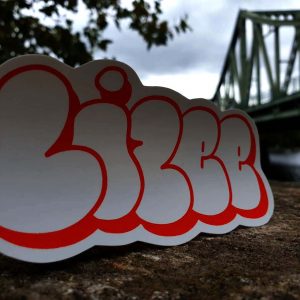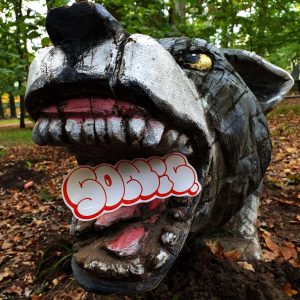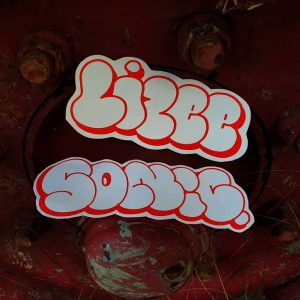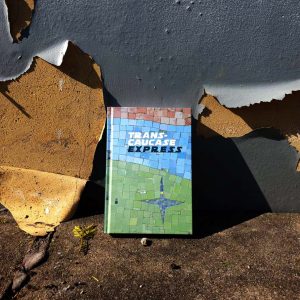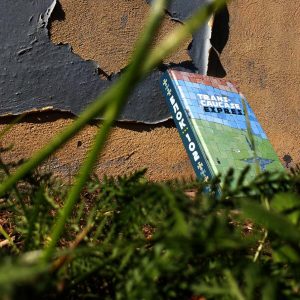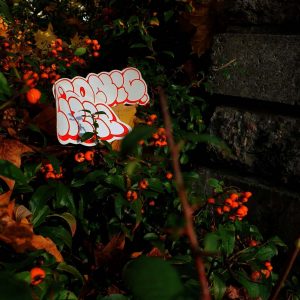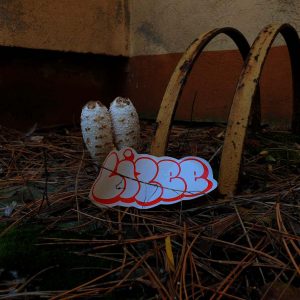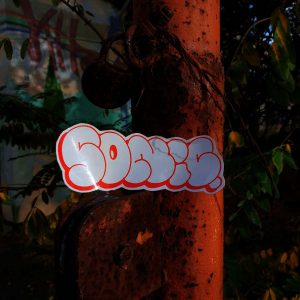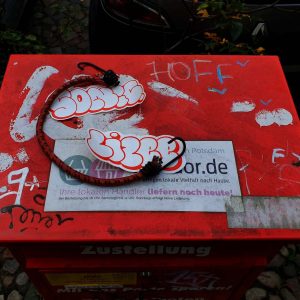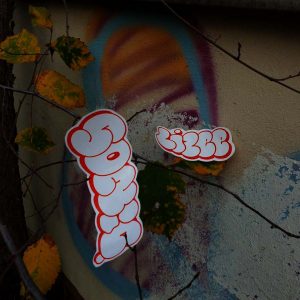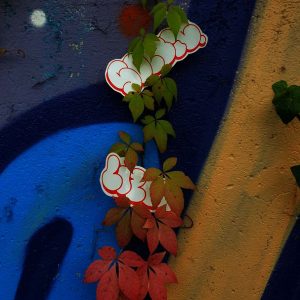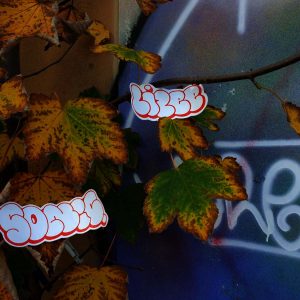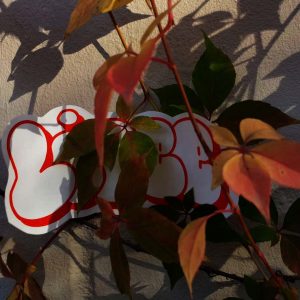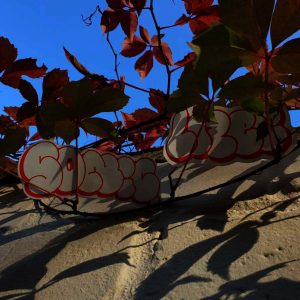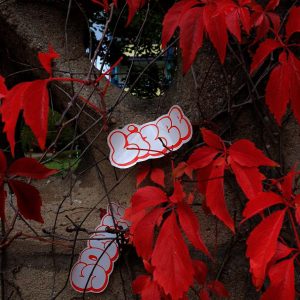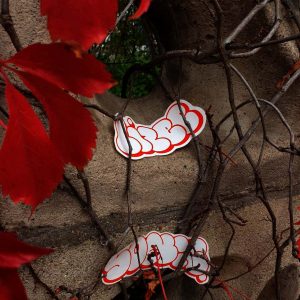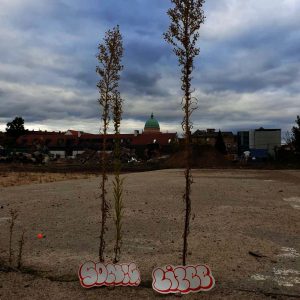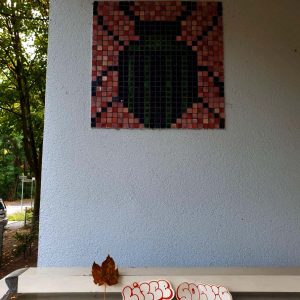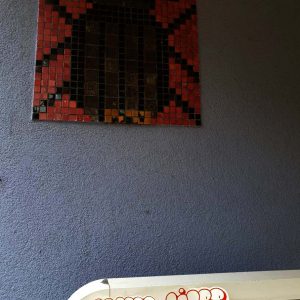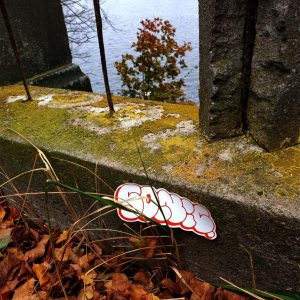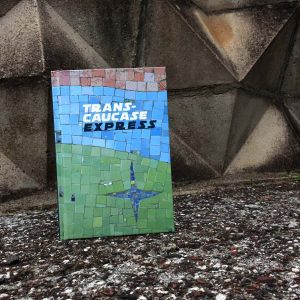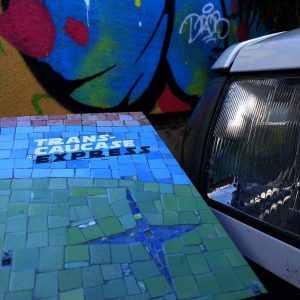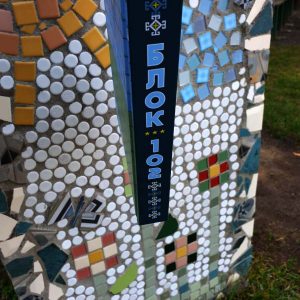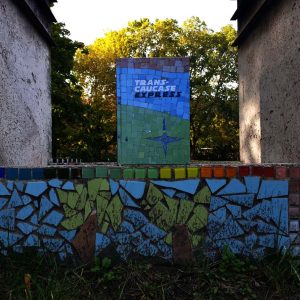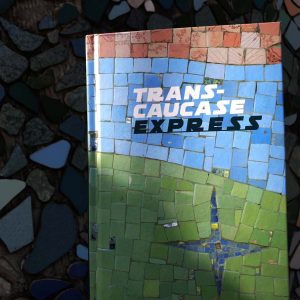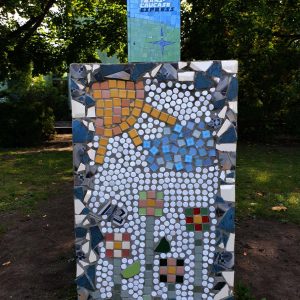SONIK Interview - TRANS-CAUCASE EXPRESS
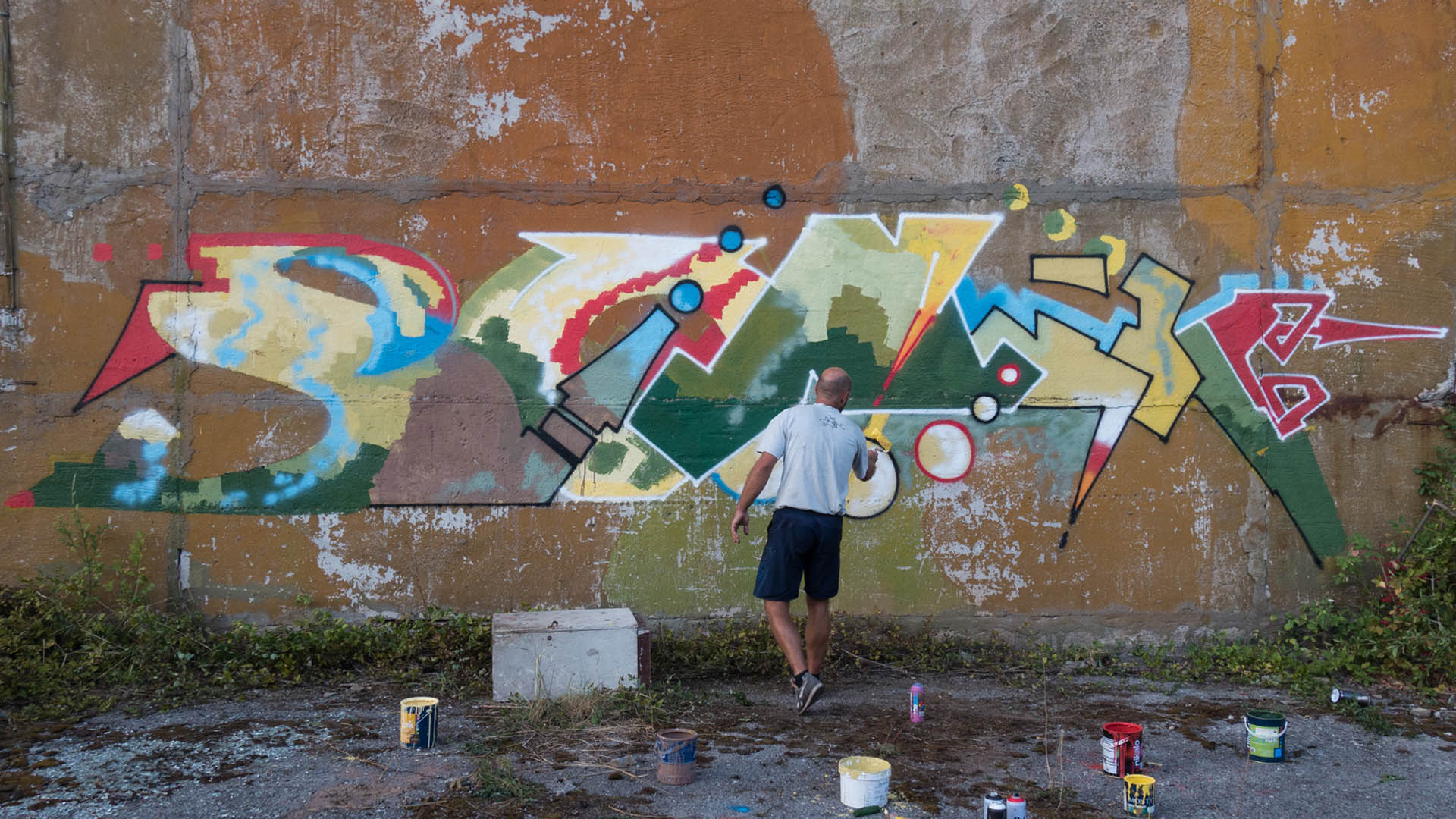
We are exposed to so much overload. Of course, or especially on instagram. But even instagram is the place where I saw something that calmed me down in a certain way.
The video for the book Trans-Caucase Express.
The video from the journey is so atmospheric and creates so much wanderlust that it hurts a little.
In the video, travelling, painting and discovery become a mixture that seems to be made for each other.
It is far away from competition or rivalry, it is about moments and encounters.
To see how respectfully the travellers behave in their travelled places is extremely pleasant.
There is a kind of symbolic image for that:
We see Sonic cleaning mosaics and wall paintings. He makes the past visible. Relics are appreciated, the past is brought back into the present.
Discovering the spaces of the past is also something that interests me as a photographer.
What is hidden? Where is something still original?
Driven by all the impressions from the video and the book I was inspired.
And so I went on several walks through Potsdam, where I positioned the stickers in places that were connected to the
contents of the book. At least I tried. Actually, I wanted to focus only on traces from the GDR era – the past that is still there.
I had so much fun with all this that I added more photo backgrounds, detached from the actual main theme: shapes of colours and curious things.
In retrospect, I can say that my main goal in this project was probably the interaction. The interaction between the city of Potsdam with its GDR past and the stickers.
Where in Potsdam do the stickers work? Where in the city do the stickers work in such a way that they match the content of the book?
And since my interest in the journey and the book is so unbroken, I interviewed Sonic about it.
Was painting the destination of the journey, or was travelling the destination of the journey?
Let’s say both. The aim was to drive and to continue to move forward. We were in no hurry. No one was waiting for
us anywhere. This meant that we could take our time to discover and also drift and get lost. In search of something unusual
we could leave the main roads and follow our instincts instead of the map.The freedom that the van offers is that every
time you see something you like, you just have to stop and start painting. It is really spontaneous.
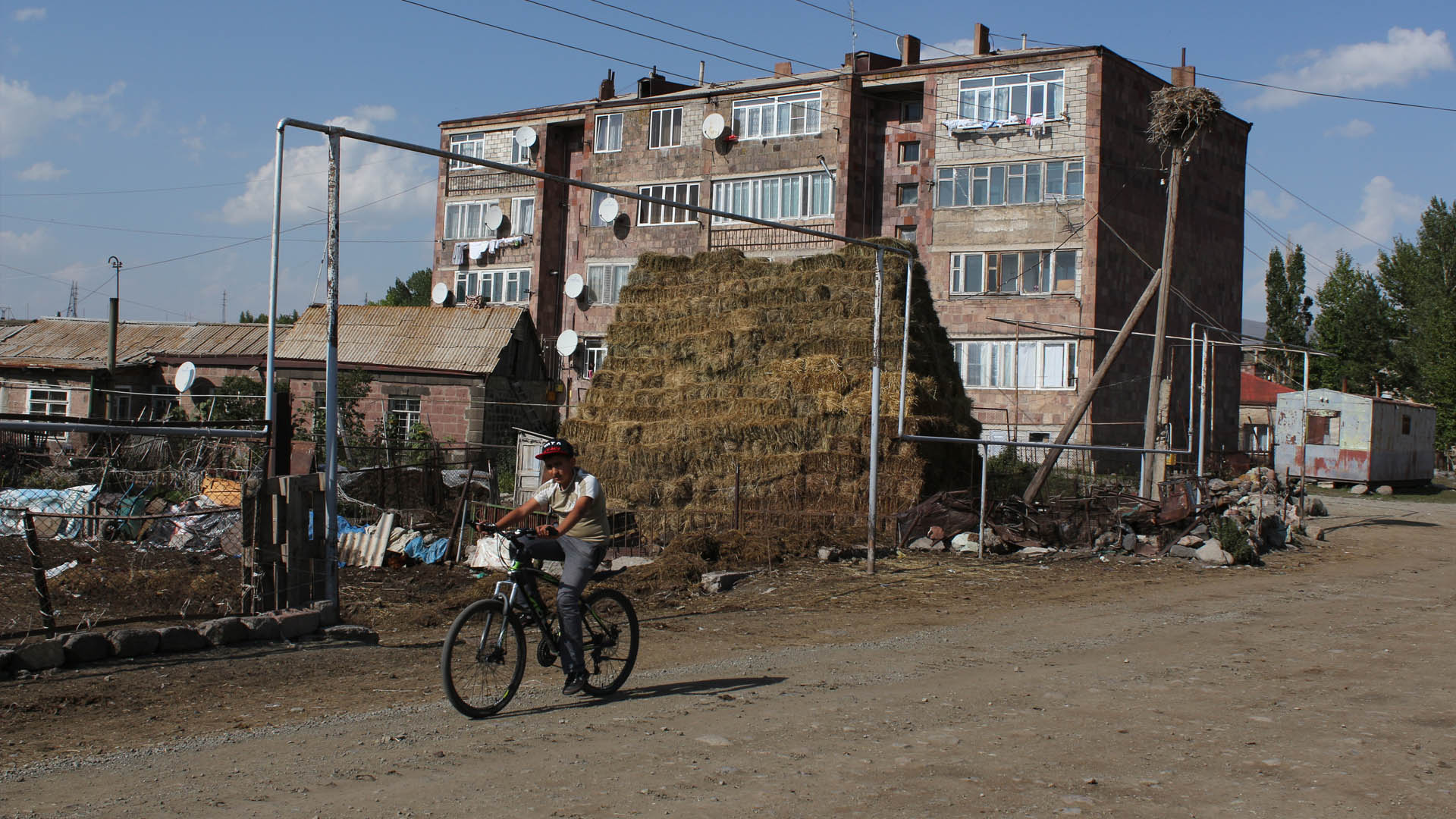
When did you decide to publish a book about the journey?
Photography is connected with my painting from the very beginning. First, just to archive my pieces.
But I quickly understood that the context and the moments around are part of the story. I started taking photos by
photographing my missions, people I met, architecture and landscapes. I am working on a book series called BLOK 102. Trans-Caucase Express is the second release of this edition.
Even before the trip I knew that I wanted to do a project in my area where I come from. You have to be prepared
for all this – after driving, photography and painting take up most of the day. A lot of energy goes into it.
You filmed, took photos and wrote texts. Which form of documentation did you enjoy most?
In my opinion all three forms work together. But each one adds something different to the whole. They work on
different levels and interpretations for the reader, dynamics or intimacy. It is this interplay of different
documentations that makes up the rhythm of the project. I cannot say which one I like the most. For me all are
necessary to share what I want to transport. I choose the one that best conveys the context, the emotions.
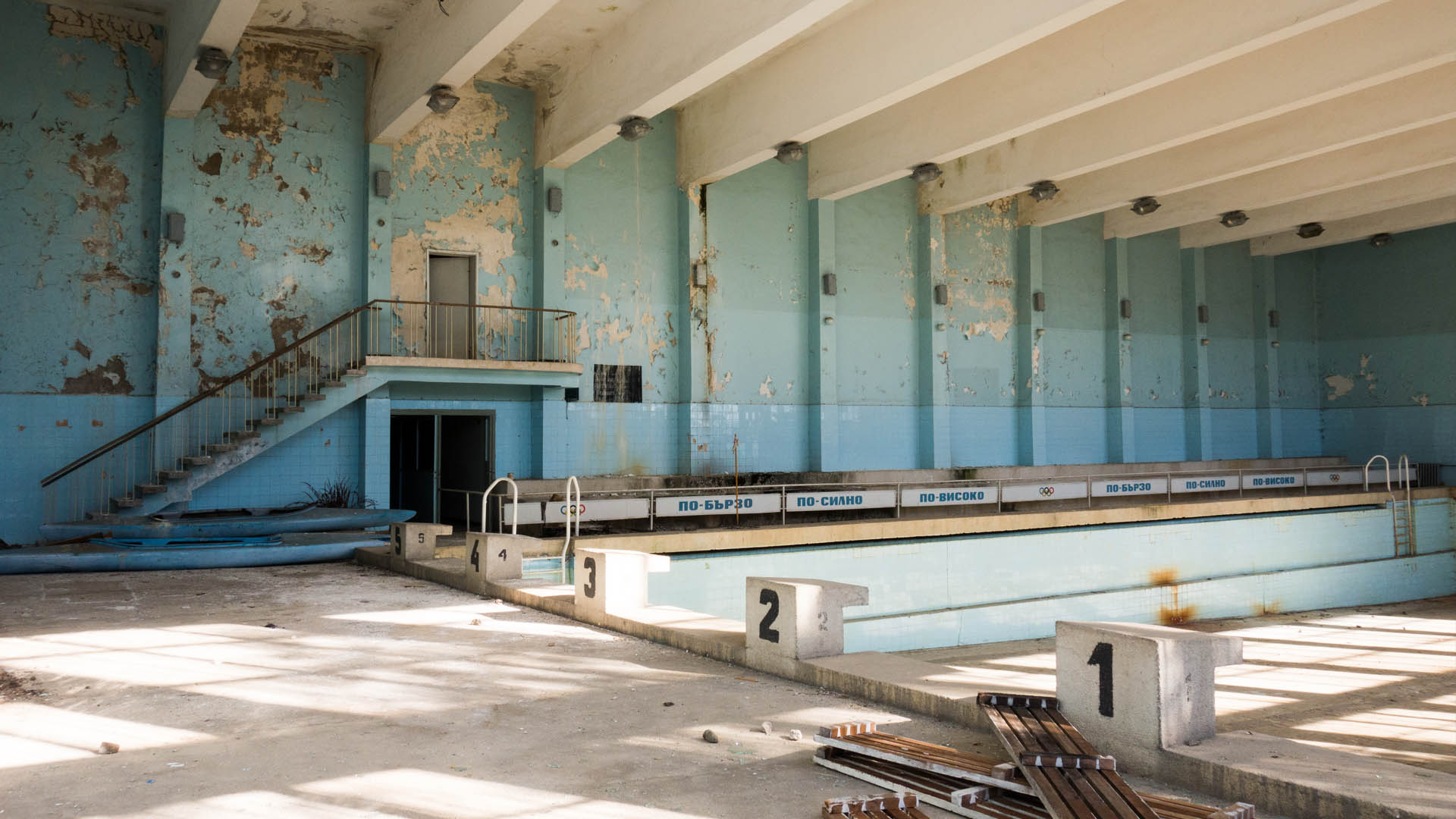
How much paint and spray cans did you take with you? Was it enough or did you have to get new paint during the tour?
I take as much colour as I can. Because I prefer to use good quality paint that lasts for years and because I have a lot of
it left over from my jobs. I had about 200 litters of paint and 40 spraycans with me. It was too much, I came back with some
leftovers. But I like to have a choice of colours.
How did you choose your painting spots? What dangers did you accept for certain spots? Was relaxed painting more
important to you than painting every imaginable spot?
We chose the spots according to how we feel at the moment. Visibility and context play a role – both together are great.
Most of the time you never know what can happen, but with time and observation you get a feeling for it.
To have good photos in the end, we do a lot. We play with time realisation and localisation. We also talk to people
and think about the position of the sun. Experience makes sure that the circumstances are mastered.
At any moment you must be prepared to talk to the police and deal with them. As we say: „Nobody should ignore the law“, almost
everywhere it is not allowed to write on walls without permission, so it is up to you to decide.
I change my practice out of respect for locals – I am not willing to be a conqueror from the West. So I don’t blow up four
spraycans with fatcaps like we do in Paris, for example. In this kind of place, I don’t see interest on this.
I exchange more with people and I am happy when they appreciate what I am doing near where they live.
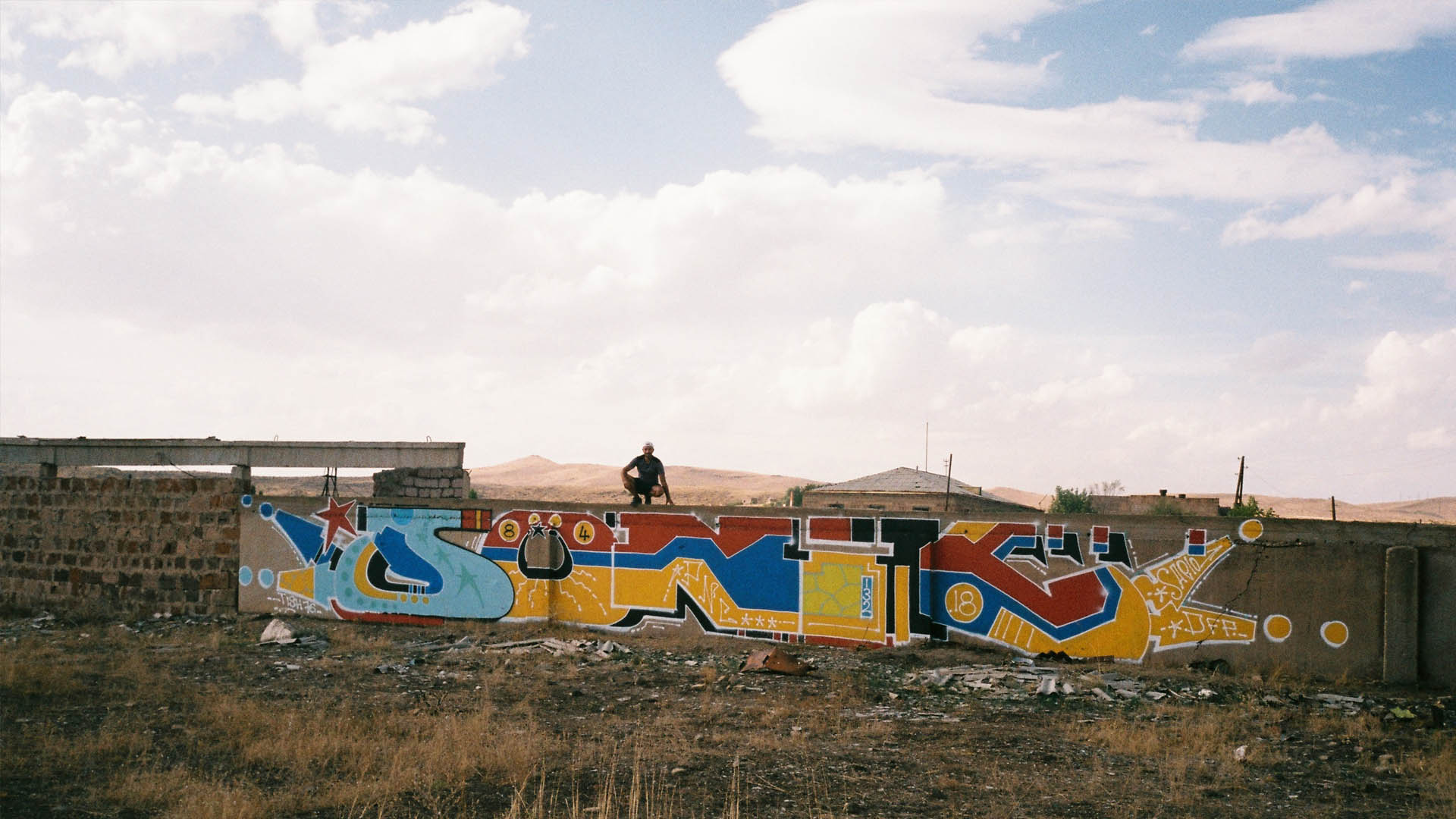
You seem to have started the journey well equipped and prepared. Was there anything that you
would do differently on the next adventure? Was there something you hadn’t thought of that you were surprised by?
I know my main goals and prepare for them before I start the trip, but Hasard is really important for me when
I travel. So it’s a great mix of planning and freedom. Let’s go there and we will see what we can do, what we can
discover and who we can meet and learn from this new experience. An experience, yes that’s what it is… Painting is the
reason, photography is the memory and the rest is life experience. You will carry all this inside you for the rest
of your life.
With all the spontaneity you kept open during the trip, did you still have everyday routines during
the trip? If so, which ones?
When you travel around like we do – being in a new place almost every day – everything goes much faster. There is
not even time to absorb all the information around you. Driving as pure driving (and not as looking
at the landscape) was the only routine feeling. That and the daily tomatoes and cheese salad!
But if you like it, it is not considered a negative feeling.
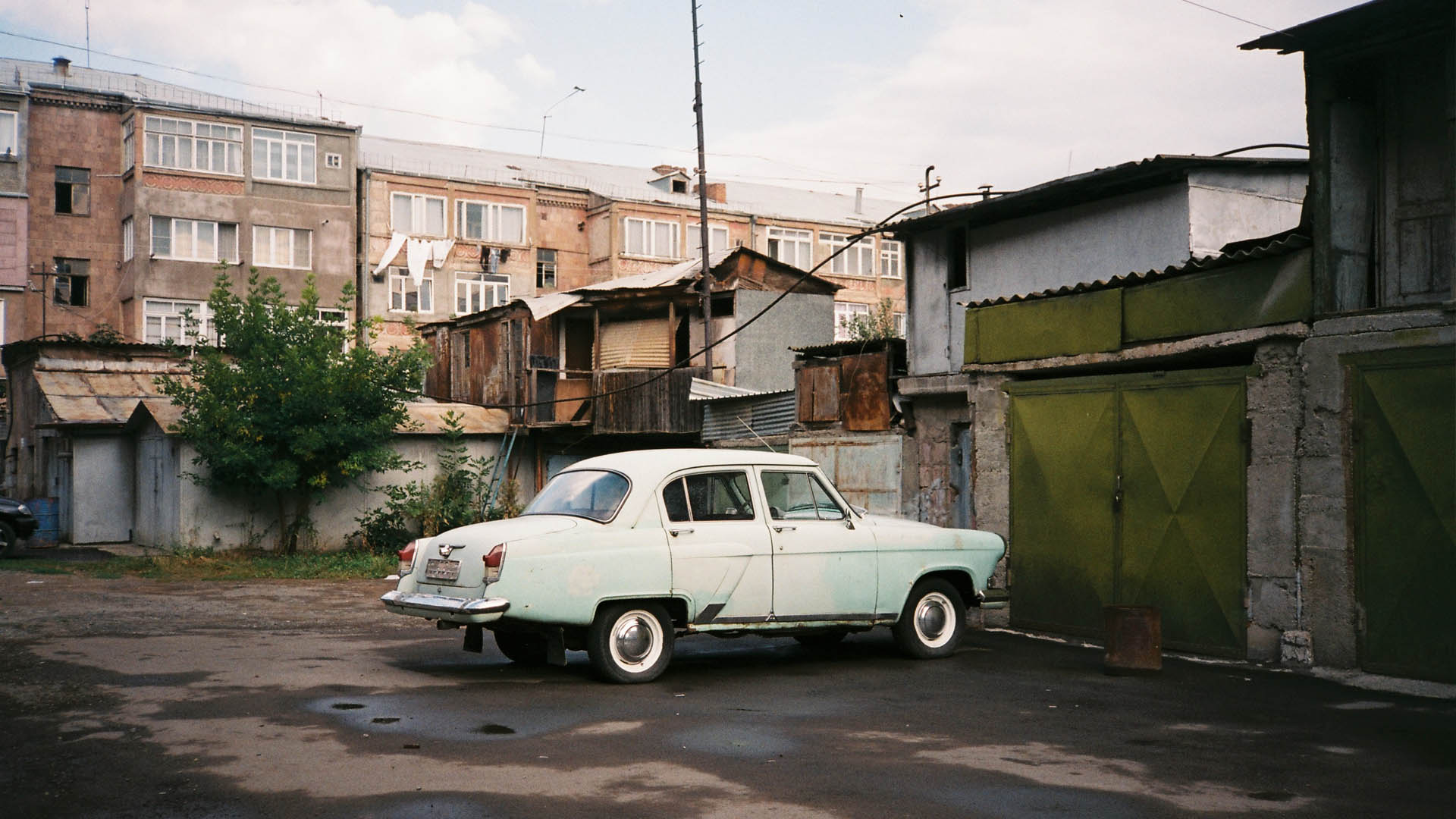
The book mentions the car radio and the following: „We listen to music while eating and watching the rain
from the shelter of our van“ – what role did music play during the trip? Did you listen to certain, selected music?
Hehe…Since I’ve been driving, I’ve never changed the old radios in any of my cars. I don’t take the time for that.
That’s why I drive my Ford Transit with a radio tape deck where the tape doesn’t work.
I’m a bit like a worker who has music playing in the background on the construction site. It’s a way to feel space.
Sometimes I just like the silence.
Lizee is the DJ, she was really a techno DJ back in the days.
So she put music from her portable phone speaker in the car on the trip, some audible and selected music! A playlist
with different rap, techno… I’m not a music expert, that was secondary in my life for all time.
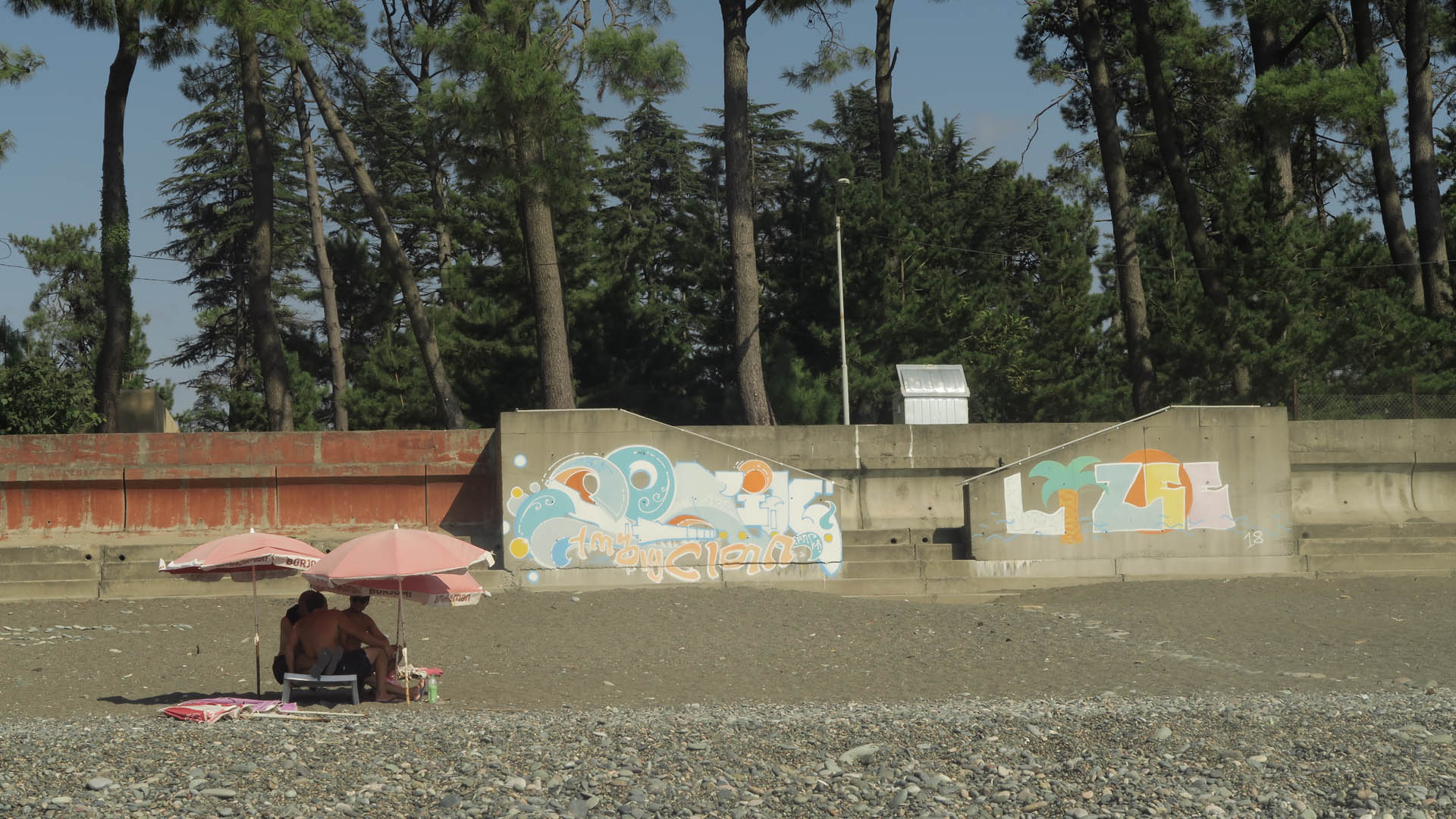
I was impressed by the respect you have shown for mosaics and wall paintings. When you think of the
mosaics and murals from your journey, what thoughts come to your mind?
It was a great surprise to find so many mosaics from Soviet times. Most of them are in really bad condition.
Hidden behind trees or abandoned factories and sanatoriums. As a link to the Soviet era, people don’t
really care. The past is the past – but serious meanings can come with it.
As a painter, as an artist, for me it is a treasure. I have associated these wall paintings with Mexico and especially
with Diego Rivera.
Russians take a lot of influences on this – The idea of representing the political commitment
through propaganda paintings.
It was partly an interaction between Rivera and the Russian art school that led to this new path.
The CCCP state has commissioned art teachers and artists to work on it a lot.
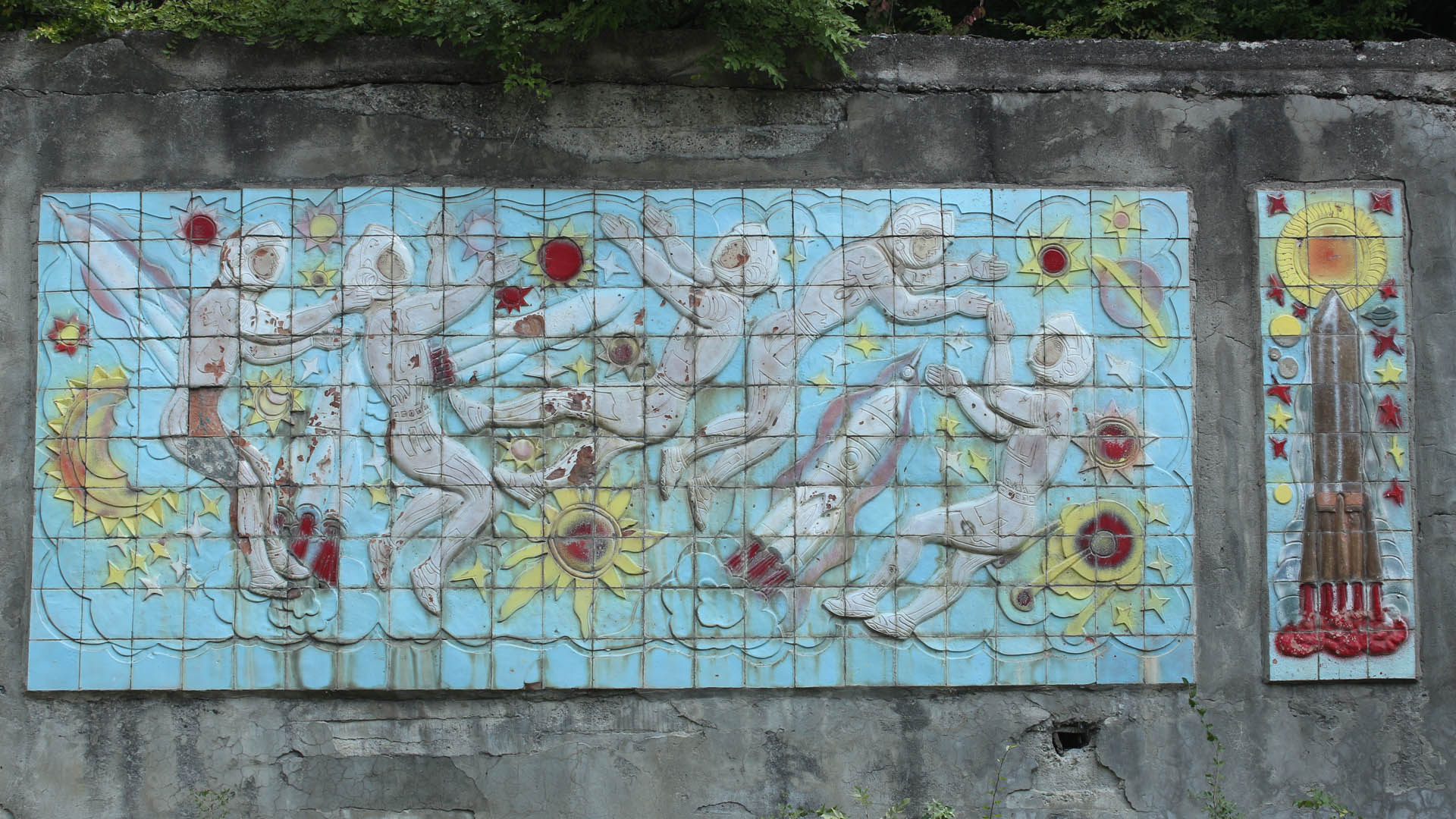
What were the reactions of the local people? Were people interested in your graffiti?
Did anyone notice your handling of the mosaics or the cleaning of the mosaics?
Forget graffiti and its attributions. Graffiti is painting, and I use the connection that painting can
have with all people on earth. It is a point of contact. The shapes and colours are a universal language.
That is why I combine painting with travelling. It connects me directly with the local people – this creates an
interaction that turns me from a tourist spectator into a local actor.
This changes the whole journey, things happen, great or not, but it happens a little bit deeper.
Nobody noticed when I spent two hours in the bushes cutting trees or scraping out the white paint on
the mosaics in the bus station. But in some other similar actions they saw me as a village idiot!
People can’t imagine why anyone would spend time doing this and then do it for free.
Do you need to travel to make discoveries? Or are you still able to make discoveries in your
everyday life? What did you last discover in Paris?
I don’t need to travel far, even at home I am able to discover. You just have to look at the
city differently, with children’s eyes. There are thousands of well-kept secrets to be found.
When the door is closed, you will find a hole. When the hole is plugged, climb up the tree. When they have
cut down the tree, use it to cross the river. Be resourceful and forget the things adults say because they are lying.
That crap like „it’s about your age“, „it’s useless“…I want to wander around and take the time to get lost in the in-between spaces of the city.
The opposite of your „modern nomadic life“ that you have lived during the adventure is the present. How do you
currently cope with all this? Are there any definite travel plans?
Even a pirate who misses the oceans always has a small island as his base.
You must have a place where you can rest, earn money and think about what to do next. In the past, I have worked
outside my country for a long time and stayed nearby after work was done. It has cost me almost nothing.
My plan is to work on my artworks and editions in my studio until the borders open up again. I am preparing
a big trip to Russia, because soon I will be back in northern Morocco to prepare the next book, and I have to travel
to Central Asia again to finish some things there. I am no longer in a hurry. Things take years, I will
continue the work at my pace.
Thank you for the interview.
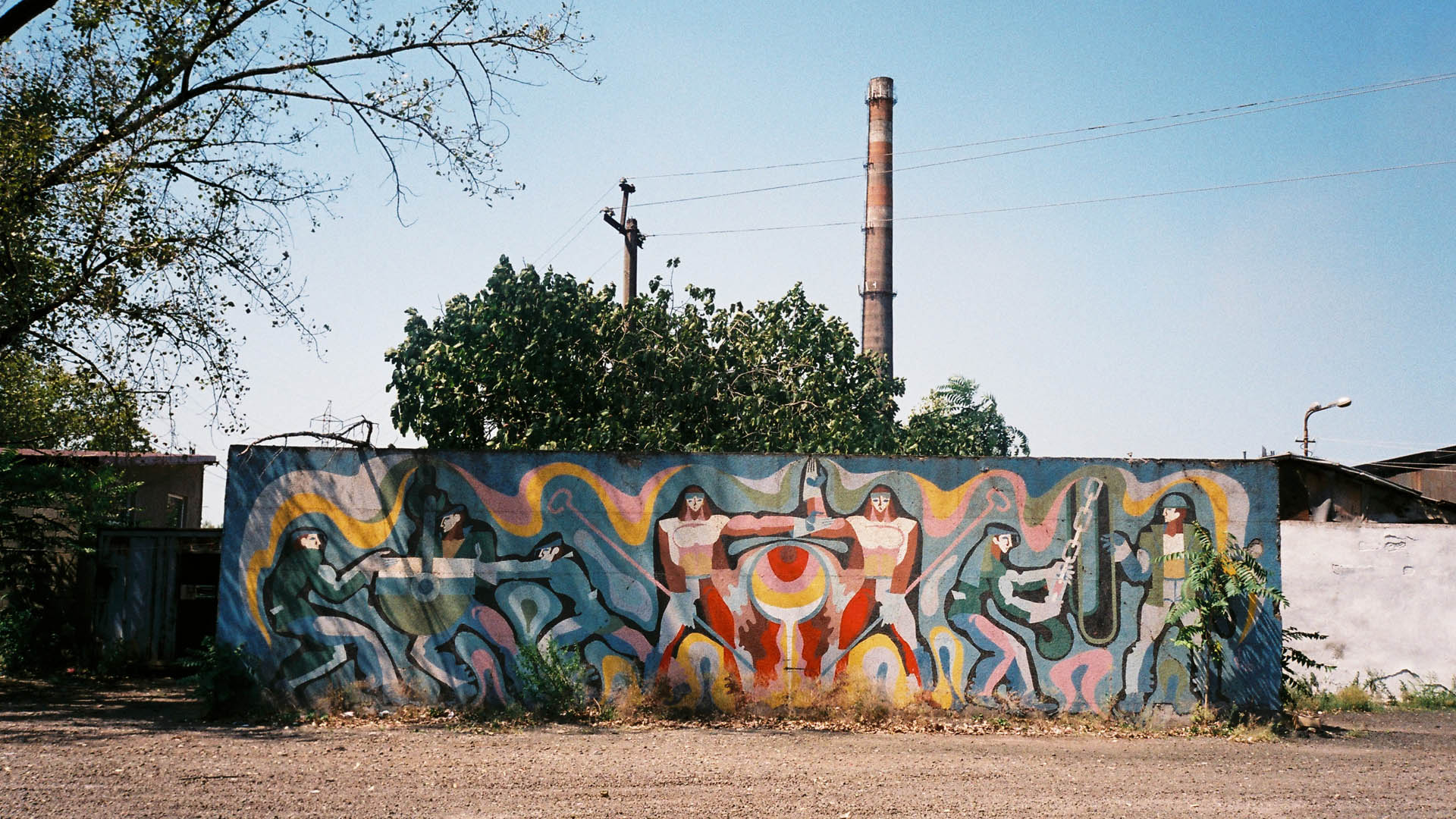
Es schrieb: Henry Berner

